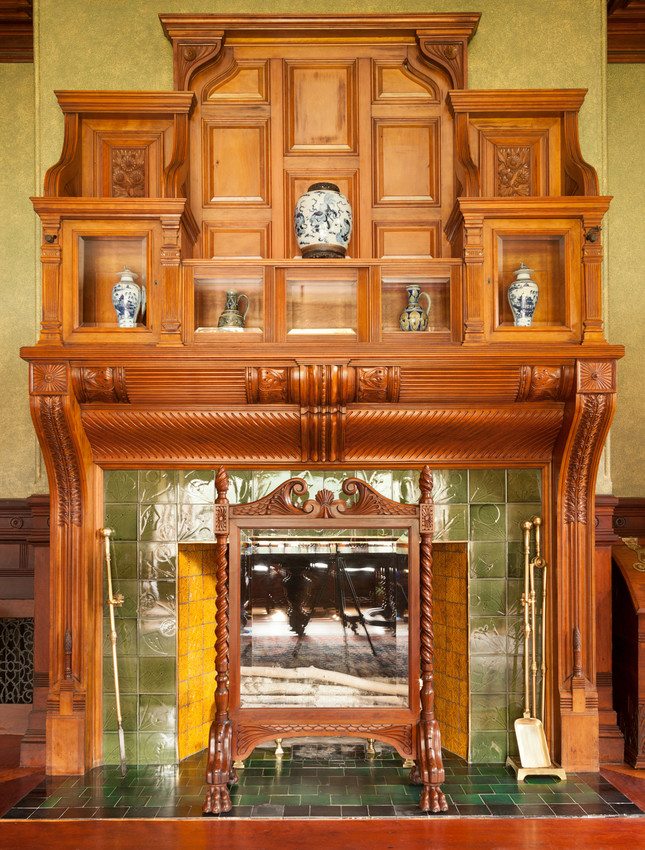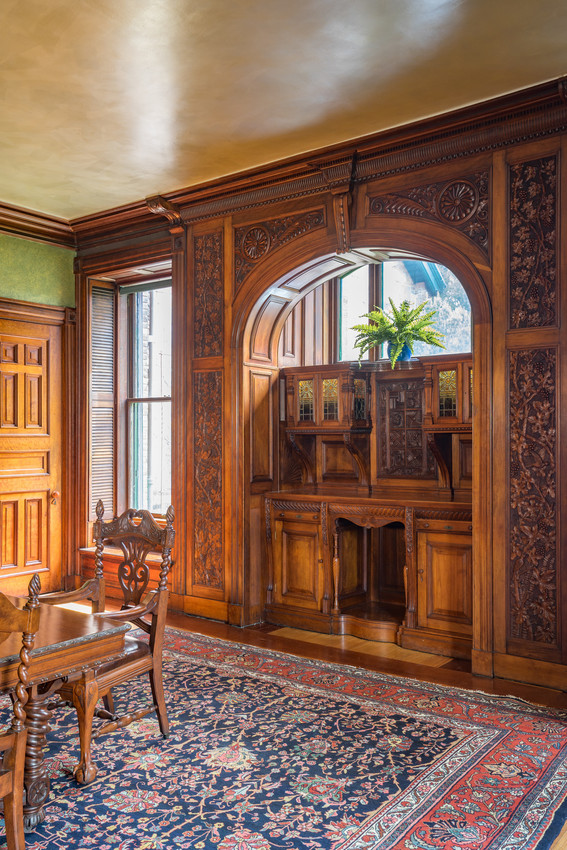 Eustis Estate
Eustis Estate
The Dining Room

A glittering and glowing room
The Eustis family ate all their meals in this room. Dinner required formal dress and consisted of defined courses, which was typical for wealthy families. The setting was more relaxed during breakfast and lunch. The food was served by a waitress, a term that refers to female servants who served meals in the dining room.
Family history also tells us that during the winter months the parlor was often too cold to spend time in and the family would use the warmer dining room as a sitting space.
Historic New England meticulously restored this room to its 1870s decorative scheme. Gold-colored paint applied to textured walls created a surface that glittered in the dancing light of the gas chandelier. The silver paint on the ceiling softly glowed. In the nineteenth century, this room dazzled guests while they dined.
Low's Natural Tiles
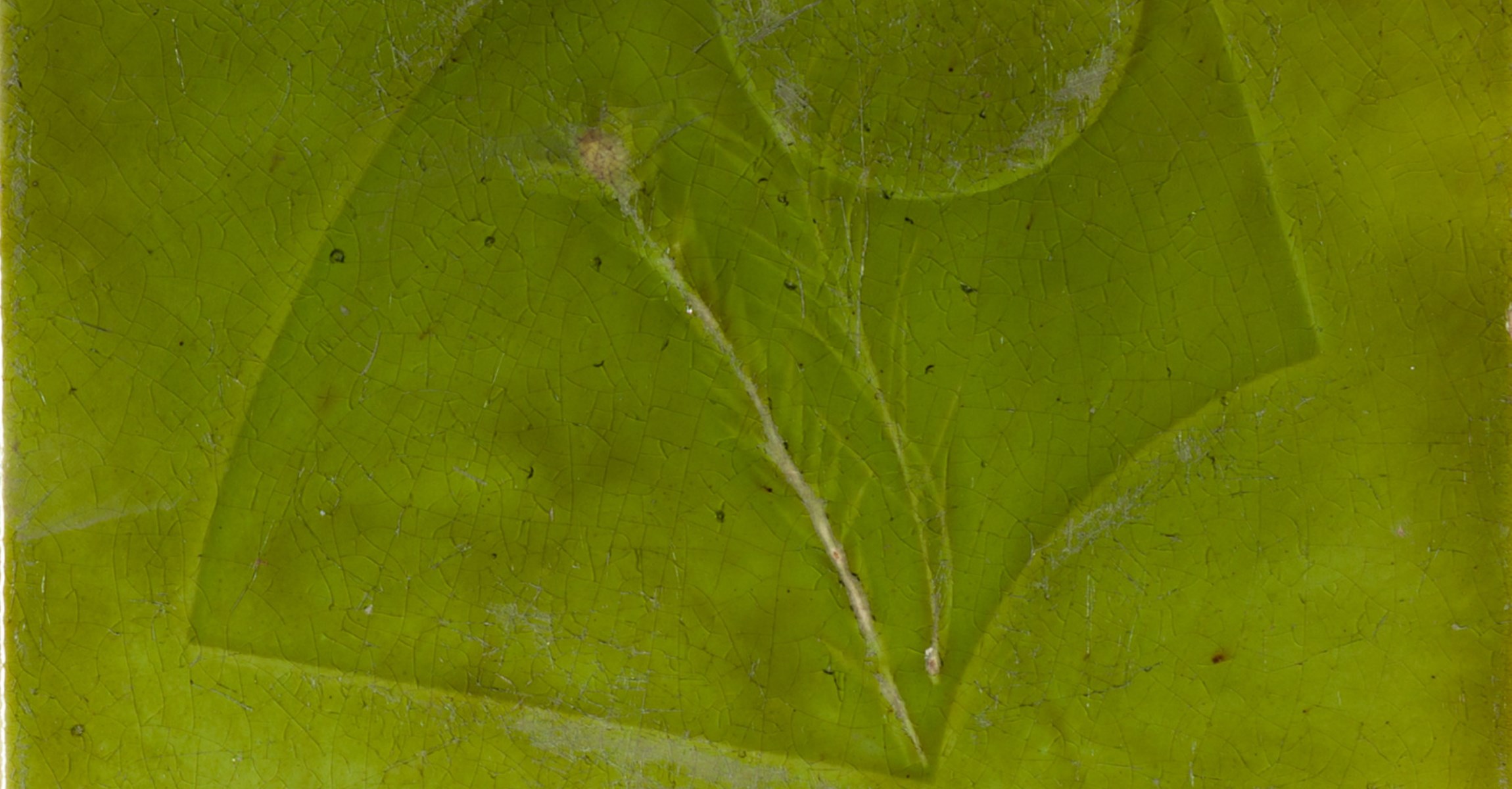
John Gardner Low’s Natural Tiles
The tiles on the dining room fireplace were produced by the J. & J.G. Low Art Tile Company, based in Chelsea, Massachusetts. The patent for these tiles, granted to John Gardner Low in 1879, outlines the details of his “Natural Tile” process. The tiles in the Eustises’ dining room may well have been among the first of this type purchased from the company.
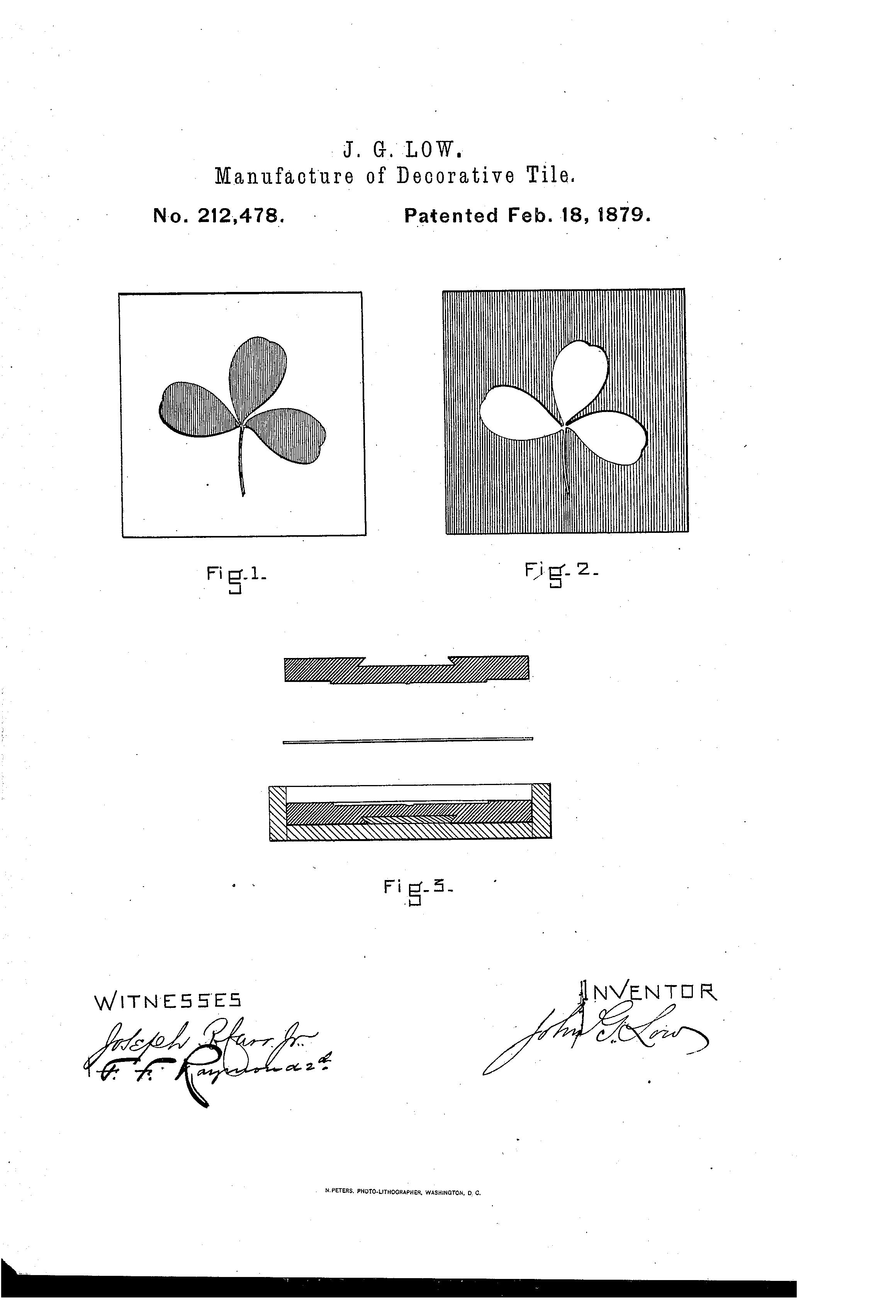
A Carved Masterpiece
Click on the image to take a closer lookDining Room A Carved Masterpiece
The stained glass panels in the sideboard are likely from the studio of William J. McPherson, identified by the signature on the edge of one of the stained glass panels in the vestibule doors. The solder detail on all the first floor stained glass shows the same decorative treatment of small ball at each of the joints.
While we have no evidence of who the wood carvers were, the Eustis family speculates that the carved panels that flank the sideboard are the work of Luigi Frullini, whose Florentine workshop created the carvings for the dining room and library of Chateau-Sur-Mer in Newport, Rhode Island in the 1870s.
Analyzing the Dining Room's Historic Paint

Underneath one of the sconces was a small area of original wall treatment that had been protected and was only slightly tarnished. It hinted at how dramatic the entire room once looked.
By the middle of the twentieth century the walls in this room had become dark brown. The bronze powder in the paint was badly tarnished, completely losing its gold appearance. In order to brighten the room, the family painted the walls pale blue. Through microscopic paint analysis of the original finish found beneath the modern paint, Historic New England determined the original technique used to create the highly textured and reflective walls.
Paint analysis revealed that a base coat of dark green oil paint mixed with sharp-edged grains of coarse sand was first applied to the plaster walls. A bright gold-colored bronze powder was then overlaid to create a surface that reflected light off tens of thousands of tiny facets on the grains of sand. The broad arch framing the exterior bay windows was a less textured, more shimmering surface. The ceiling was a smooth surface composed of silver-colored tin powder on white paint overlaid with an amber toning varnish. It glowed warmly in the light of the room’s gasolier and sconces.
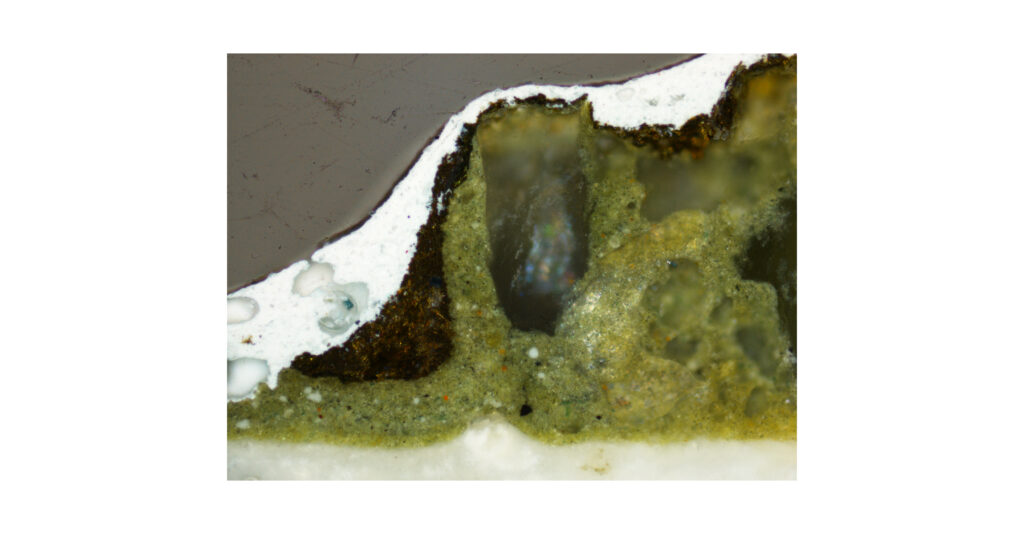
This cross-section image shows each layer. On the bottom is the base layer of green paint with large, coarse sand mixed in. On top of that is a thin layer of the bronze powder paint, tarnished to dark brown. The top layer is the modern light blue paint that covered the tarnished bronze paint.
Haberstroh's Paint Technique

In 1889 Albert Haberstroh, whose firm did the decorative paintwork inside the mansion, published a book titled Art in Decoration. In it, he describes a decorative paint technique he used in a Boston hotel. The description bears a striking similarity to the paint from the Eustis dining room:
“The general tone is subdued gold, but there are interspersed bits of color at just the right places, which keep the walls from staring at you and becoming too bold, and admits of no incongruity or jarring in conjunction with the whole.”
